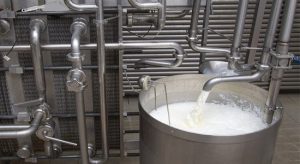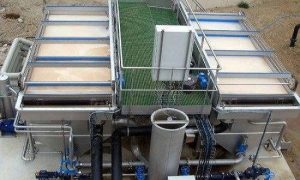five ways to tackle waste in food manufacturing
Discover tactics leading companies are deploying on their way to zero-waste
In the food and beverage industry, we are increasingly aware of our environmental footprint, and food waste is a big part of it. One quarter of the emissions from food production ends up as wastage either from supply chain losses or consumers. It’s clear that to reduce emissions, we need to prevent food waste, and leading companies across the sector are adopting zero-waste strategies to do so.
But what does zero-waste mean in food and beverage manufacturing? And what initiatives and solutions are successfully tackling waste? Roberto Franchitti, Executive Vice President, Services & Quality at Tetra Pak, has some answers.
“Zero-waste is a growing movement among consumers who are adopting habits like refusing plastic bags or composting food waste,” Roberto explains. “But in food manufacturing, it goes beyond new habits to implementing more sustainable practices across production and the entire supply chain,” Roberto continues.

Addressing the product’s lifecycle
This means not only removing waste during the manufacturing process but thinking through the entire lifecycle of the product – from how waste is created in the acquisition of raw materials to what happens at the end of the product’s life. Zero waste also includes carbon and energy emissions, water wastage and even time wastage. “Zero-waste is an ambition that no one company can achieve overnight,” says Roberto.
“It’s a journey driven by a series of initiatives within the company and marked by incremental milestones.” He points to five key initiatives he sees many Tetra Pak customers deploying on their journey towards zero-waste:

-
Empowering the workforce with the right tools
“As with any cultural shift in a company, zero-waste starts with the right mindset,” says Roberto. “Across the organisation, employees need to be aware of wastage, and it needs to be a common goal to reduce it. Once the goal has been set, workers need the tools and technologies that empower them to make better decisions and take actions to control waste.”
Tools like connectivity and data insights enable workers to oversee their operation lines seamlessly, allowing them to make more informed decisions and engage with their product more holistically. In turn, these tools allow plant managers to clearly see which lines are performing inefficiently in real-time or predict a breakdown before it occurs. And artificial intelligence and machine learning can provide the information to make decisions quickly to mitigate these losses.
-
On-demand manufacturing enables circular processes
To cope with the growing demand for product variety, food and beverage manufacturers are looking to develop customised products at the cost of mass production. That means shifting towards more flexible production lines. “Using data-led insights, manufacturers can predict changing customer demands over time,” says Roberto.
“The insights help make manufacturing more ‘on-demand’, enabling factories to work towards a more circular process by only producing what will be used and eliminating as much waste as possible.”
For example, an American juice producer adopted a data-driven customised total maintenance program. The result was a 60%-65% improvement in OEE (Overall Equipment Effectiveness), a ~10% reduction in operational cost savings and more than 5% in waste reduction.
-
Using second-hand equipment reduces CO2
Besides digital tools and technologies, many food manufacturers are using refurbished equipment instead of only buying new. Not only does this save investment costs, but it also keeps parts and materials in use and out of incinerators or landfills.
“In other industries, like the mining industry, for example, reusing equipment is standard, and now we’re seeing food manufacturers adopt this practice more willingly,” says Roberto. “Besides reducing waste, using second-hand equipment is a good way to reduce CO2 and improve your total environmental footprint.”
-
The right choice of materials can increase recyclability
Using less raw material and increasing the amount of recycled material is also on the agenda for zero-waste food manufacturers. For example, many are using paper and cardboard where they would have used plastic a few years ago.
“Many of our customers are asking for easily recyclable materials rather than complex, multi-material designs that are difficult to separate and break down,” says Roberto. “That’s why we are focused on replacing the aluminium foil in our aseptic packages with a renewable alternative and increasing the recyclability of our carton packages. It offers manufacturers another opportunity to reduce waste in their production.”
-
Collaboration can advance waste-reduction solutions
Companies throughout the value chain are collaborating on many sustainability and innovation initiatives, zero-waste included. They are working together to identify focus areas and develop solutions to support waste-reduction efforts. For example, we’re collaborating with Poka to empower workers in food production with the tools and training needed to accelerate zero waste processes in food manufacturing plants.
“Through this partnership, which is driven by technology, the workforce will be able to increase efficiencies in food production, make informed decisions and ultimately minimise product waste. It’s an important part of our journey to help our customers increase sustainability throughout their production.” Roberto concludes.
In food and beverage manufacturing, anything that does not create value is considered loss. To achieve zero-waste, the right mindset and the right decisions can drive change throughout the organisation. Digital tools and technologies can play a major role in the journey, but food manufacturers can adopt a long list of practices as part of their zero-waste strategy. And it all adds up to more efficient and sustainable food production.

